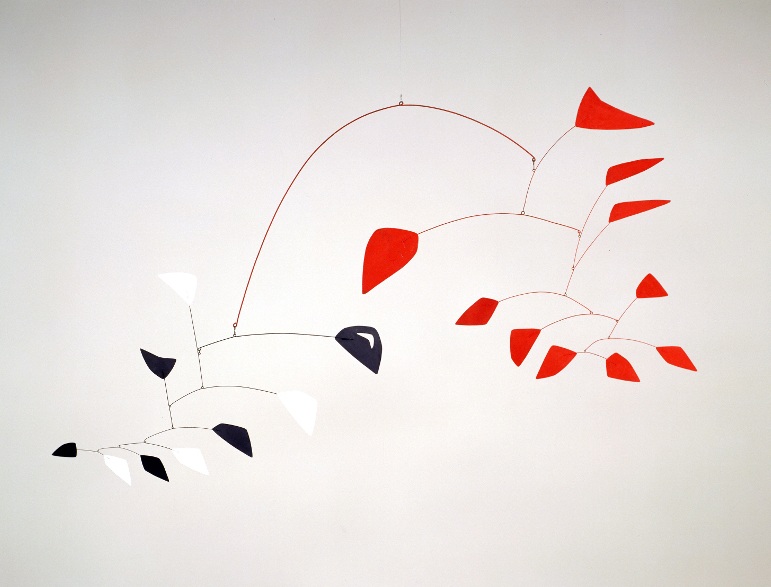
18 Sep Alexander Calder: Revisiting a Pioneer
OCMA recently concluded Alexander Calder and Contemporary Art: Form, Balance, Joy (April 10-September 4, 2011) which gives us great reason to revisit the inventor of the mobile, pioneer of modern sculpture and master of grace and balance.
When you first encounter one of Calder’s iconic mobiles, a large floating sculpture of steel rods and sheet metal, vivid oblongs, circles and paddles painted in primary colors, intricately balanced and gently rotating, several fundamental principles are thrown into sharp relief: Color. Shape. Balance. Abstraction.
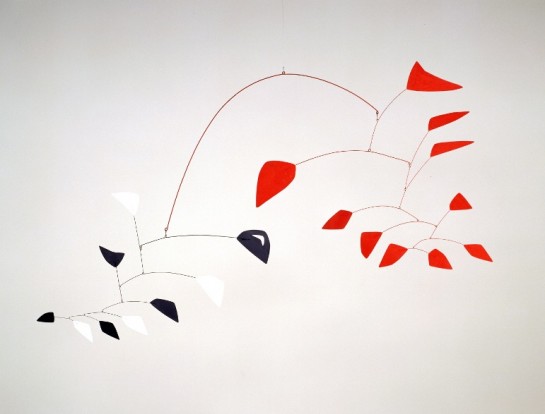
The mobiles are so ingeniously composed the first thought is “how did he do that?” My companion, a physicist, says “L1M1 = L2M2”, a principle of static equilibrium describing the relationship of mass and distance of two objects on opposite ends of a fulcrum needed to achieve balance (yes, you just got a physics lesson on an art blog). If that lost you it’s reassuring to know Calder was a mechanical engineer by training. A fantastic example is Orange Paddle Under the Table where 6 feet of white discs and wire appear to hover above a table until you see they are nimbly balanced and counterweighted by said paddle…under the table.
What is more striking than the construction is the sheer grace of the mobiles: the entire sculpture is in remarkable harmony and though made of steel they appear to twist weightlessly. The mobiles are in contrast to Calder’s “stabiles” scattered around the exhibit, which are grounded sculptures implying movement.
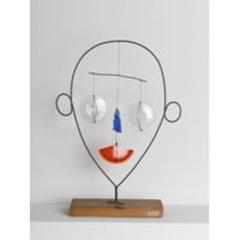
The exhibit also highlighted WWII-induced creative reuse. In the 1940’s steel was hard to come by so Calder got resourceful. Little Face, noteworthy for its simplicity, consists of a blue glass fragment nose and a taillight broken just right for red pouty lips.
The practice of reuse is chic again, though for different reasons and several contemporary artists who draw their influences from Calder were exhibited. The most brilliant is Kirsti Lippire’s Hanging Garden, a shiny copper, steel and brass rendition of various life-like plants growing out of what appears to be a sprinkler system. It reminds me of an urban rooftop garden- it’s organic, industrial and fun at the same time. Martin Boyce’s Concrete Autumn (Dead Leaves, No Ground) gives a nod to Calder as it’s both a mobile and uses recycled metal but instead of being weightless the leaves seem impossibly heavy. I must mention Nathan Carter’s Traveling Language Machine With #3 Frequency Disruptor And Disinformation Numbers Station not because the title is downright awesome but because it looks like a blue-crayon children’s drawing of a playground blown up and 3-D, and you want to play on it.
For those of you who missed this exhibit, you’ll find Calder work scattered throughout major contemporary museums in the US and his large free-standing stabiles gracing the city streets of Chicago, Seattle, Montreal, Lisbon and others.



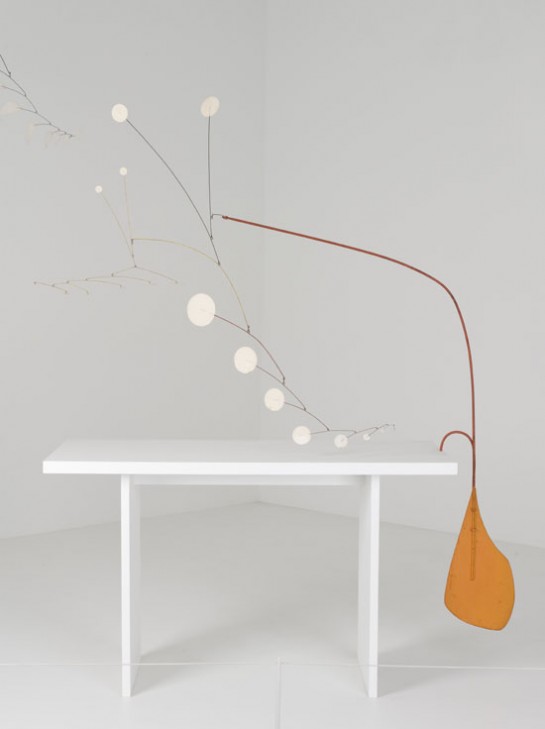
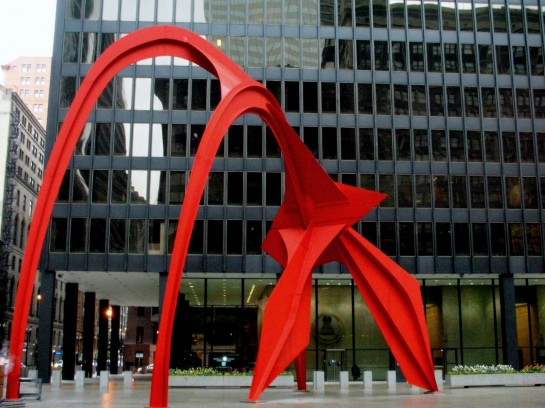

Pravina
Posted at 18:19h, 18 SeptemberI always love mobiles and these are amazing!!!
Sumitra
Posted at 23:13h, 18 SeptemberThese are beautiful pictures. What makes more enjoyable is in depth of explainantion. Little physics lesson makes you think that there is a science behind it. Explaination of the steel shortage of WWII on Clader’s art , makes you enjoy more as you see it in the context of the time frame of the history.
I believe it is very well written and explained
Garret Bohl
Posted at 12:34h, 15 OctoberThese works are so great! I really like his style, I especially really like the red sculpture at the bottom, such a great sense of form
Tania
Posted at 10:42h, 24 AprilSo THAT is what L1M1 = L2M2 stands for! I have been wondering for a while. This is really fantastic, made even more interesting by the wonders the artist can create given his scientific background.